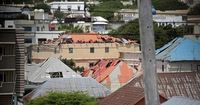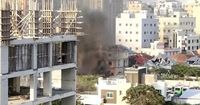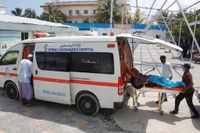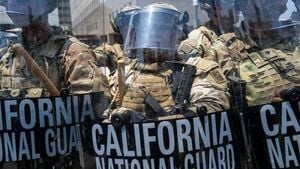In the early hours of October 4, 2025, the streets of Mogadishu, Somalia’s bustling capital, were startled awake by the sound of gunfire and sirens. What unfolded was a six-hour siege at the Godka Jilacow prison, a facility notorious for holding some of the country’s most dangerous detainees and located just a stone’s throw from the president’s office. According to the Associated Press, Somali government forces managed to bring the harrowing standoff to a close, killing all seven attackers and ending a dramatic episode that has left the city—and the nation—on edge.
This latest assault was quickly claimed by the al-Qaeda-linked al-Shabab militant group, which has a long and bloody history of orchestrating attacks in Somalia. The group’s tactics have evolved over time, but their willingness to strike high-profile targets remains unchanged. The government, for its part, was quick to reassure the public, stating that no civilian or security officers were killed during the attack. For a city long accustomed to violence, such an outcome was a rare glimmer of relief.
Yet, the timing of the attack was no coincidence. Just hours before the siege, the Somali federal government had lifted several long-standing roadblocks in Mogadishu. These barriers, originally erected to protect critical government sites, had become a constant source of frustration for residents, who argued they did more to choke off traffic and commerce than to ensure safety. The Associated Press noted that the removal of these barriers was meant to signal a return to normalcy and an improvement in the city’s security environment. Instead, it appeared to offer militants an opportunity to strike at the heart of the capital.
For months, Mogadishu had enjoyed a period of relative calm. Government forces, working in tandem with local militias and African Union troops, had succeeded in pushing al-Shabab fighters out of several areas across central and southern Somalia. According to reports from Somalia’s state media, these efforts had created a sense of cautious optimism among residents and officials alike. But as Saturday’s events demonstrated, the threat posed by al-Shabab is anything but diminished.
The attack on Godka Jilacow was meticulously planned. State media reported that the militants used a vehicle disguised to look like those of the intelligence unit’s security forces, allowing them to get dangerously close to the facility before launching their assault. Local residents described hearing sporadic gunfire for more than three hours after the attack began. The siege, which lasted six hours in total, was a stark reminder of the group’s ability to adapt and exploit vulnerabilities.
Despite the chaos, the government was adamant: no prisoners escaped during the attack. This detail, confirmed by multiple outlets including The Associated Press, was crucial. Godka Jilacow is known for holding not only common criminals but also members of al-Shabab and other extremist groups. A mass escape would have had devastating consequences for the city’s fragile security situation.
After the dust settled, the human toll of the attack began to emerge. Abdulkadir Adam, a private ambulance owner, told reporters his vehicles had transported almost 25 patients from the scene to various hospitals. The nature of their injuries was not immediately clear, but the sheer number of casualties underscored the violence of the confrontation. At one local hospital, director Abdulkadir Yousuf Abdullahi said his facility had received an unspecified number of patients. "We provided emergency and life-saving care, and we are working on identifying the patients and connecting them to their loved ones," he explained. The process of reuniting families with their injured relatives was ongoing, adding another layer of anguish to an already tense situation.
For many in Mogadishu, the siege was a chilling echo of the city’s darker days. While the government’s campaign against al-Shabab has enjoyed some success, the group has demonstrated a remarkable ability to rebound. According to reports cited by the Arab News, al-Shabab has seized control of dozens of towns and villages since the beginning of 2025, effectively reversing much of the progress made during a major military campaign in 2022 and 2023. This resurgence has not gone unnoticed by Somalia’s political leadership.
President Hassan Sheikh Mohamud, who has made security reform a cornerstone of his administration, has been pushing for Somalia’s first direct elections in 2026. The attack on Godka Jilacow, however, is a stark reminder of the challenges that lie ahead. On October 5, just a day after the siege, the president visited the province of Jubaland, where recent clashes—primarily over electoral disagreements—have erupted between the army and regional forces. The visit was widely seen as an effort to shore up support and address growing concerns about the country’s stability.
In the aftermath of the siege, questions abound. Was the lifting of roadblocks a fatal miscalculation, or simply an unfortunate coincidence? Did the attackers have inside information about the changes to security protocols? The government has so far declined to comment on these specifics, focusing instead on the successful neutralization of the attackers and the prevention of a prison break.
For ordinary Somalis, however, the episode is a sobering reminder of the precariousness of peace in their city. The roadblocks, while unpopular, had become a part of daily life—a symbol of the government’s ongoing struggle with al-Shabab. Their removal was meant to signify progress, but for some, it now feels like a gamble that didn’t pay off.
Meanwhile, the work of first responders and medical personnel continues. As Abdulkadir Yousuf Abdullahi and his team labor to identify patients and connect them with their families, the broader question of Somalia’s future hangs in the balance. The siege at Godka Jilacow may be over, but the fight for Mogadishu’s security—and the country’s democratic future—is far from finished.







